Guardians of the Amazon
Empowering Indigenous Women to Conserve the Forests of the Colombian Amazon
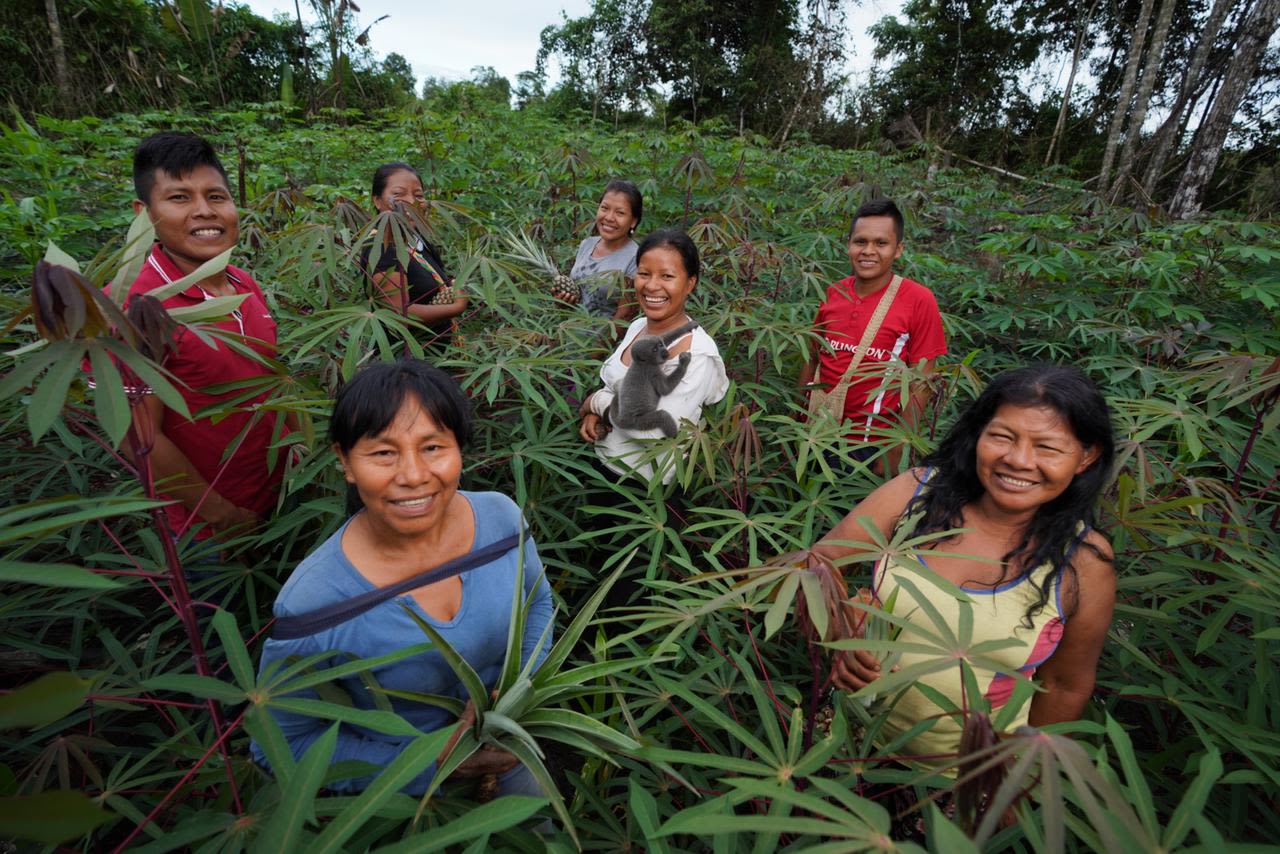
Protecting the forests of the Colombian Amazon, while improving the living conditions of the communities that inhabit them, is the mission of the Guardians of the Amazon.
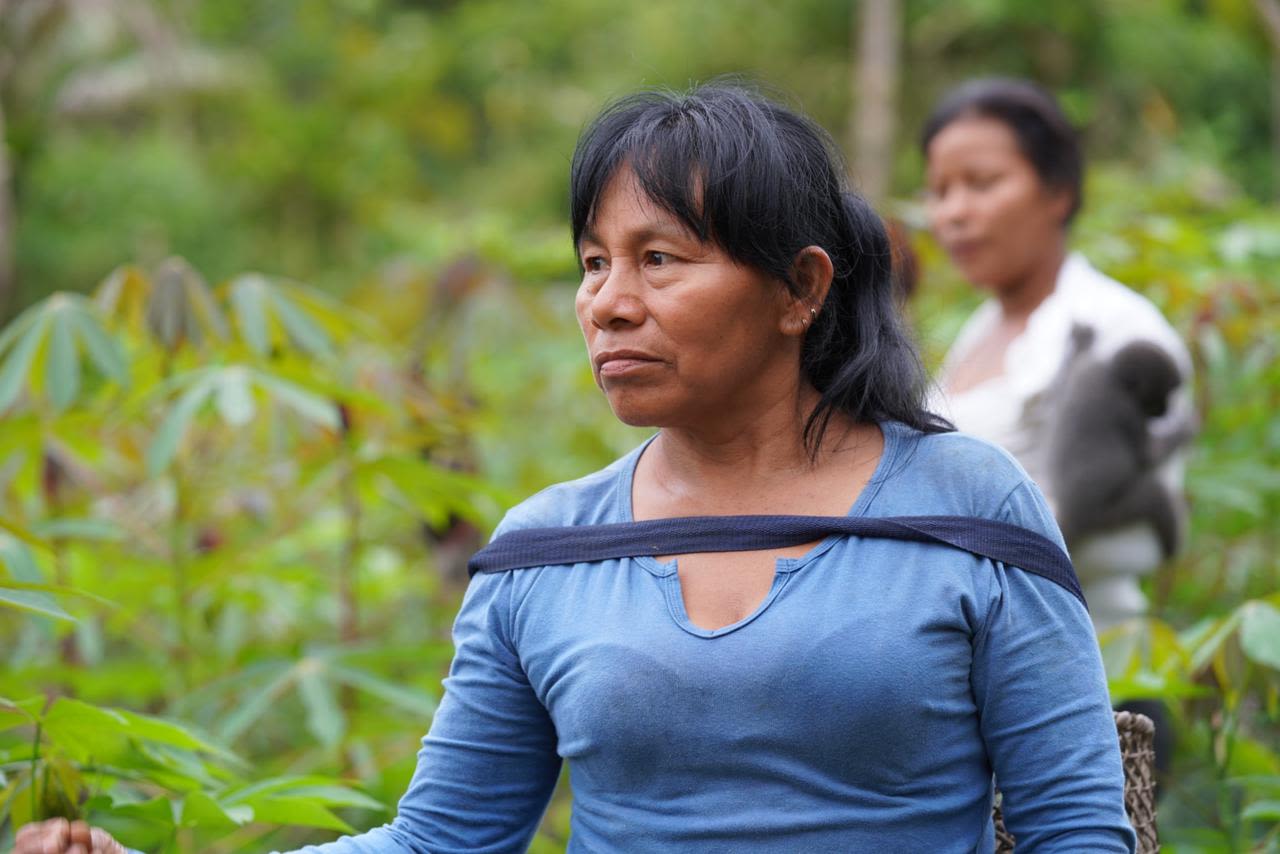
Photo: Visión Amazonía.
Specifically devoted to empowering indigenous women to not only participate in – but become leaders of – conservation and governance in their collective territories, Guardians of the Amazon is an alliance that involves roughly 2,500 indigenous women in the departments of Vaupés, Amazonas, Putumayo, Caquetá, Guaviare and Guainía, in southeast Colombia.
The Guardians of the Amazon are supported by the Global Environment Facility’s Small Grants Programme (SGP), implemented by the United Nations Development Programme, and the REDD for Early Movers (REM) Amazon Vision Programme in Colombia.

Photo: Visión Amazonía.
Photo: Visión Amazonía.
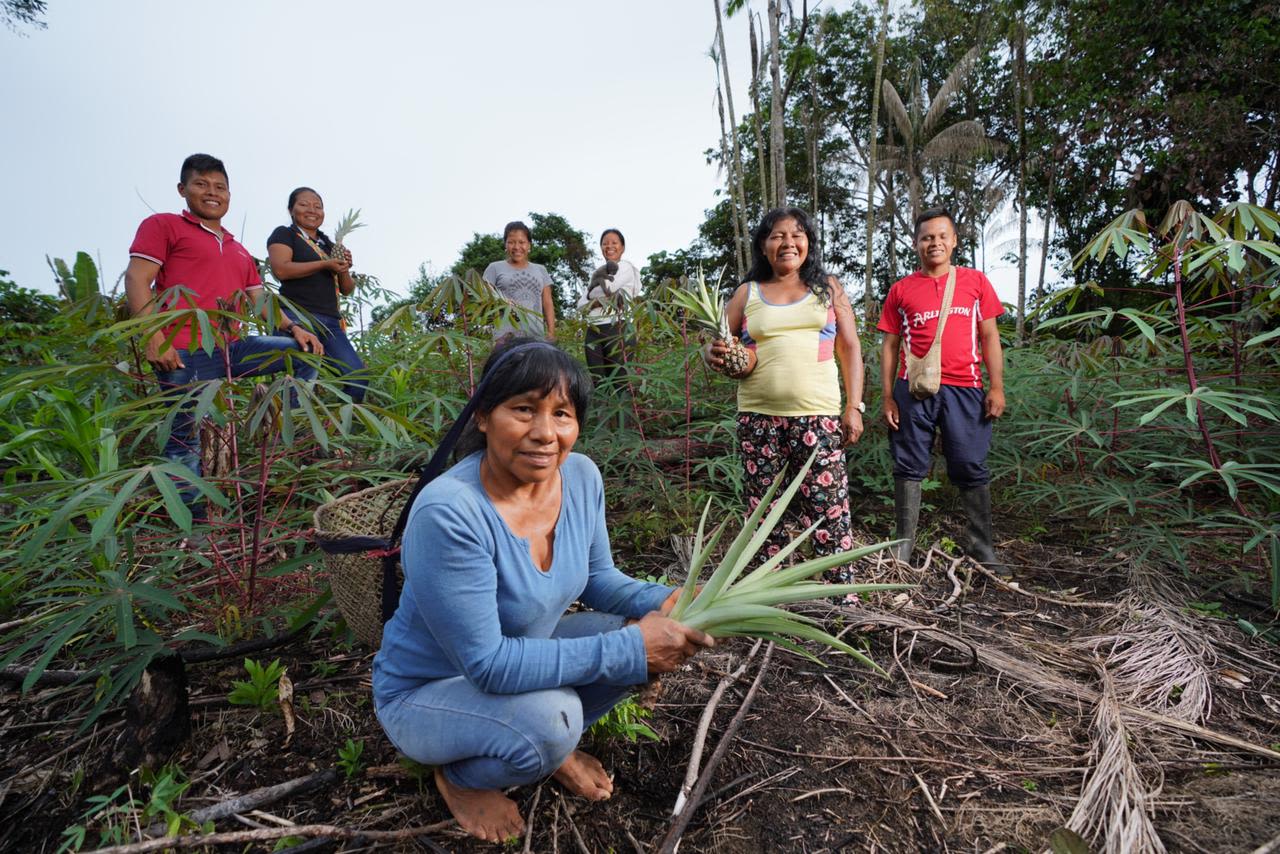

Located in the Department of Caquetá, municipality of Solano, the project is working with 48 indigenous women of the Uitoto people. Photo: Visión Amazonía.
Located in the Department of Caquetá, municipality of Solano, the project is working with 48 indigenous women of the Uitoto people. Photo: Visión Amazonía.
The Colombian Amazon
Colombia’s Amazon region makes up a significant percentage of the country, covering 40 per cent of its landmass with about 39 million hectares of forests, most of them in indigenous territory.
It is estimated that there are around 1.9 million indigenous people in the country, of which approximately 150,000 live in the Amazon in indigenous reserves and national protected areas.
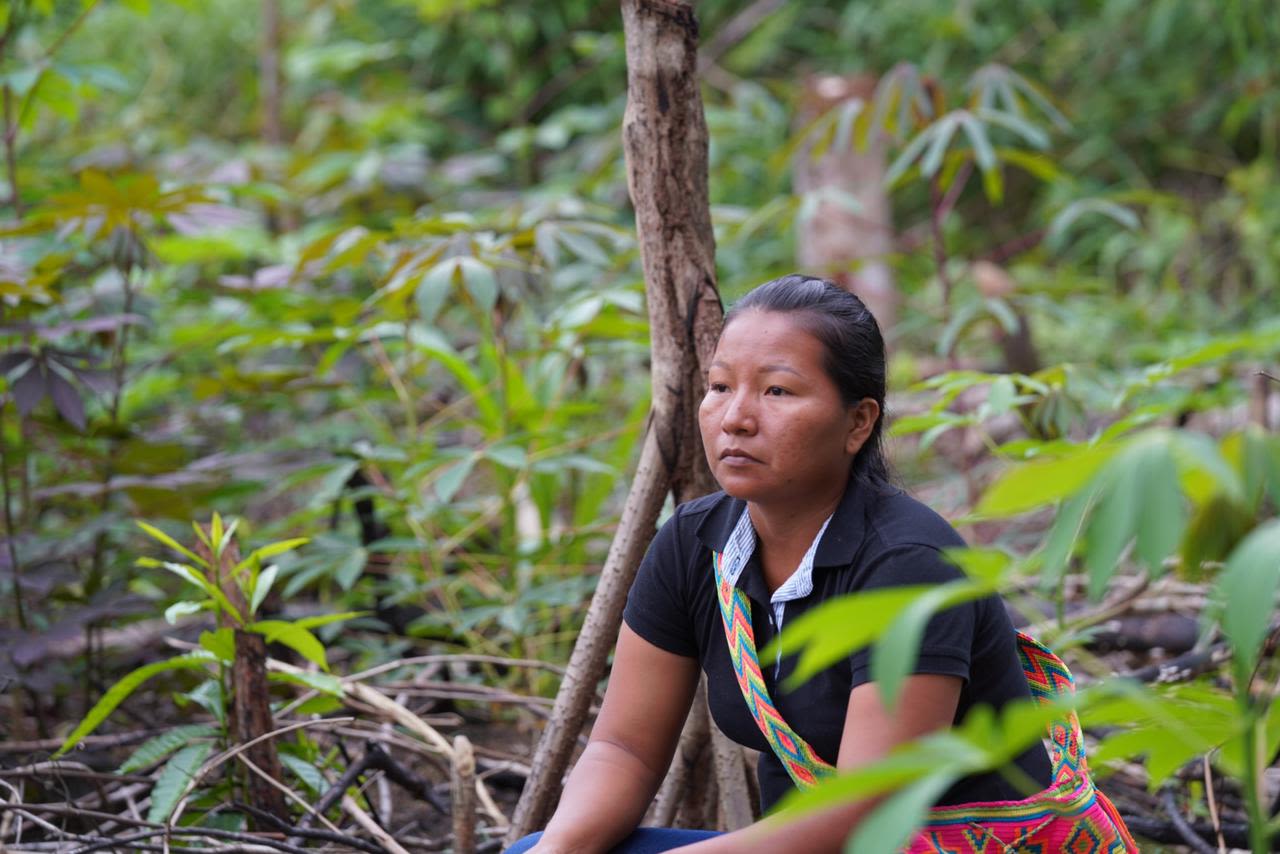
Photo: Visión Amazonía.
Therefore, forest conservation depends in large measure on the good governance and management of these territories.
However, deforestation, oil concessions, armed conflict and livestock rearing – which has spread to territories that were previously inaccessible due to the presence of the Revolutionary Armed Forces, which are now demobilized – have all made it increasingly difficult for indigenous peoples to preserve their culture and protect their territories.

Photo: Visión Amazonía.
Photo: Visión Amazonía.
The Colombian Amazon faces a high rate of forest loss, despite a reduction in the deforestation rate in the last few years.
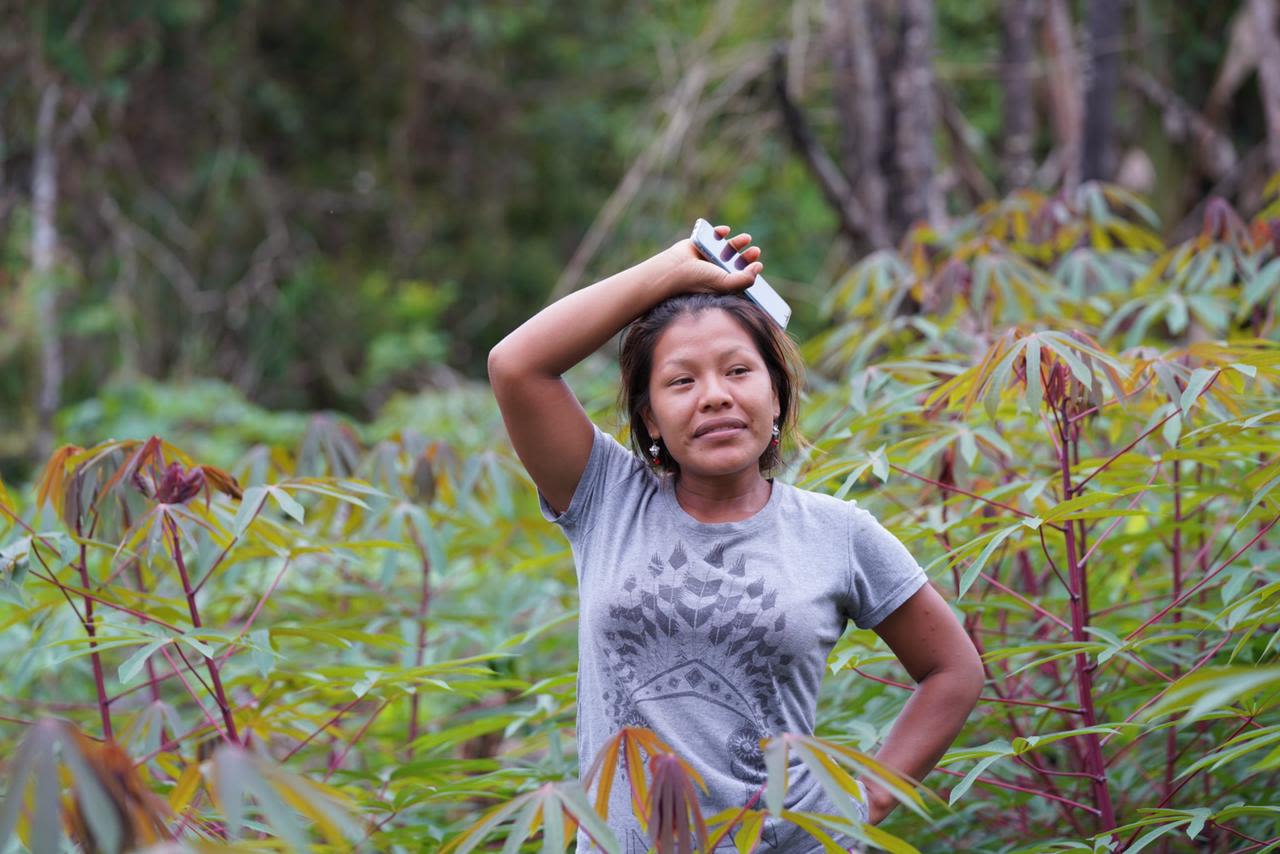
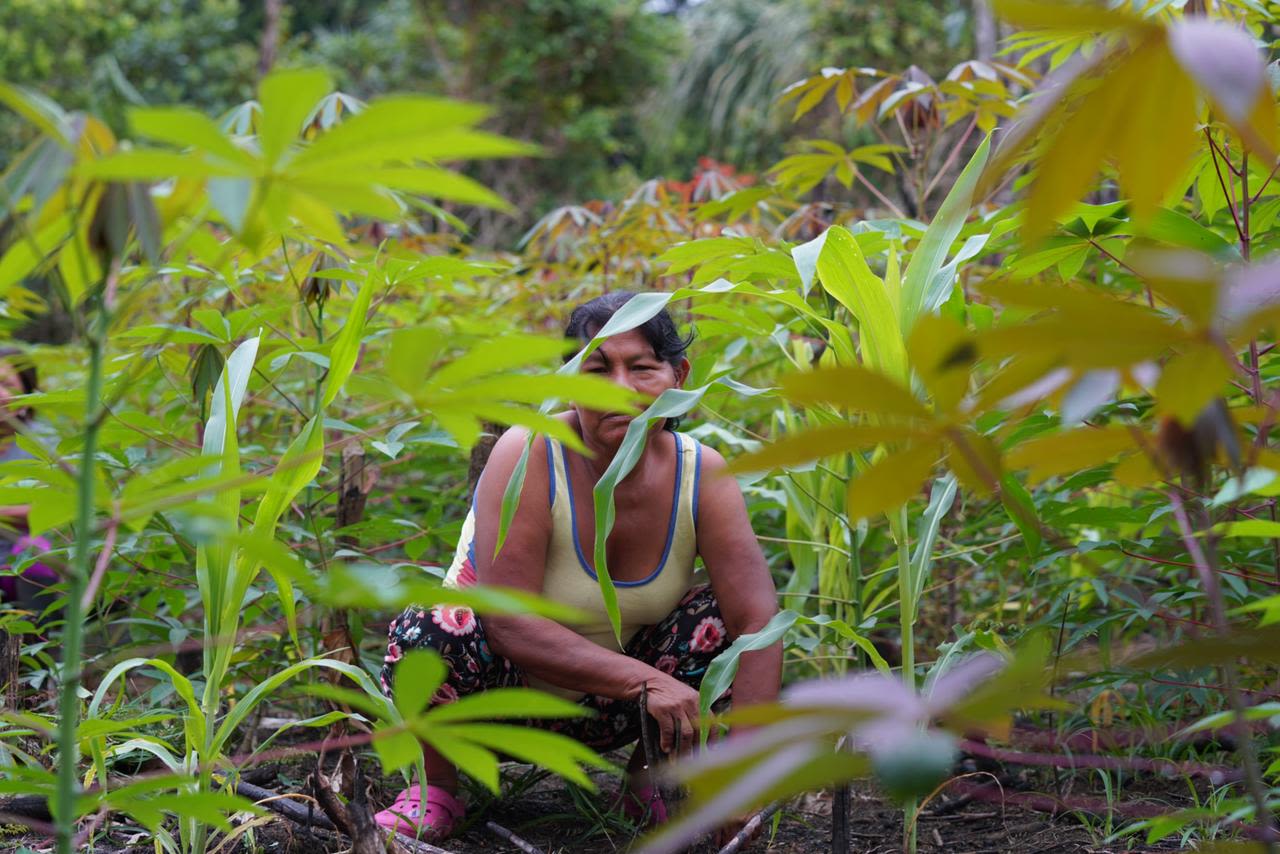
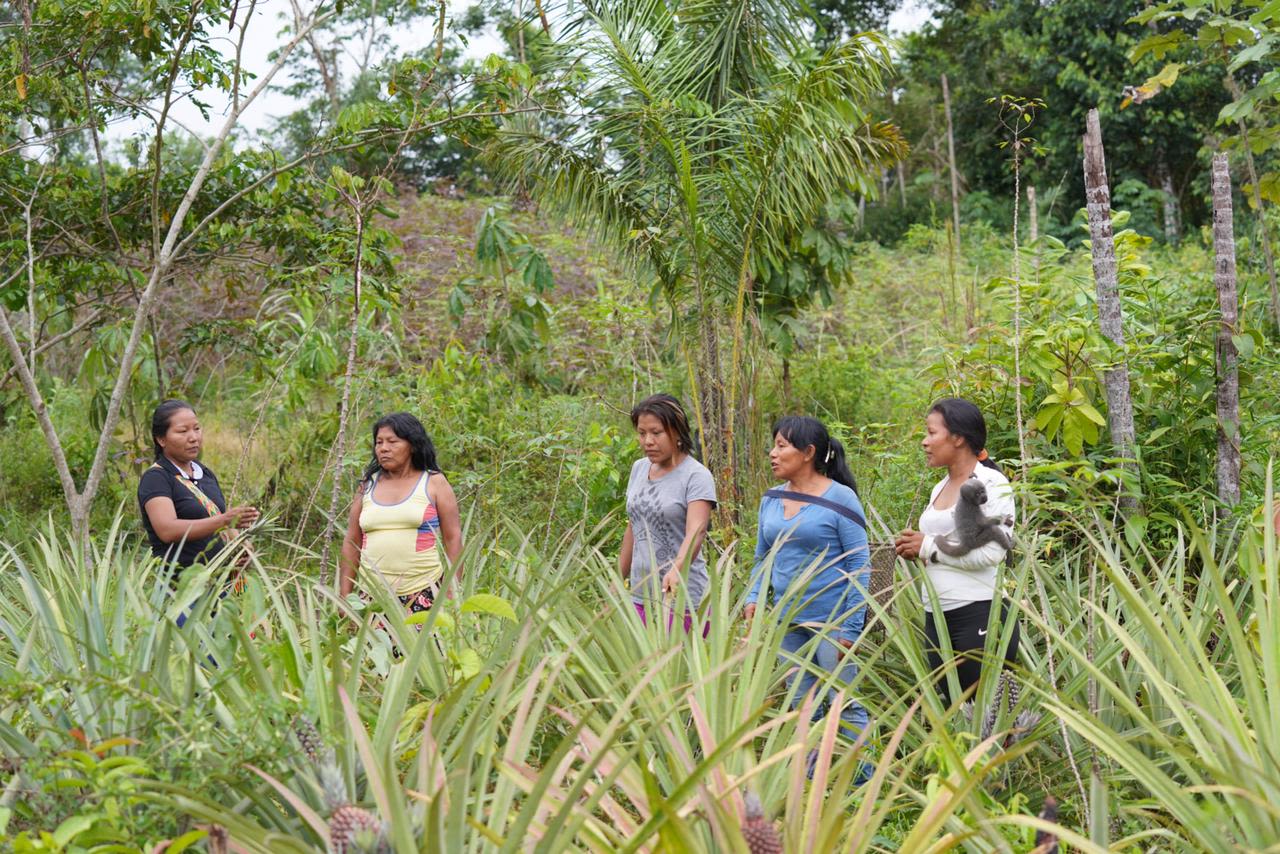

Photo: © Visión Amazonía.
Photo: © Visión Amazonía.

Photo: © Visión Amazonía.
Photo: © Visión Amazonía.

Photo: © Visión Amazonía.
Photo: © Visión Amazonía.
Women of the Amazon
Historically, indigenous women in the Amazon have been profoundly connected to the production of food and the cultivation of medicinal plants.
This is the basis for their vast knowledge about the forest and the management of its resources; these resources in turn serve as the foundation for the physical and cultural survival of indigenous peoples in the region.
However, whilst the key role that indigenous women play in their communities and in the conservation of Amazonian forests is widely understood, men are frequently still the decision makers on land use and management.
“This project seeks to allow women to take paths that empower them, because before, women were very deferential here. The men always spoke, but now we can see empowered women in their territories. As a result of a meeting that happened months ago, some of them have taken official positions. We now have female coordinators and even four female governors, so this project has given visibility to the role of women and their leadership is very strong here.”
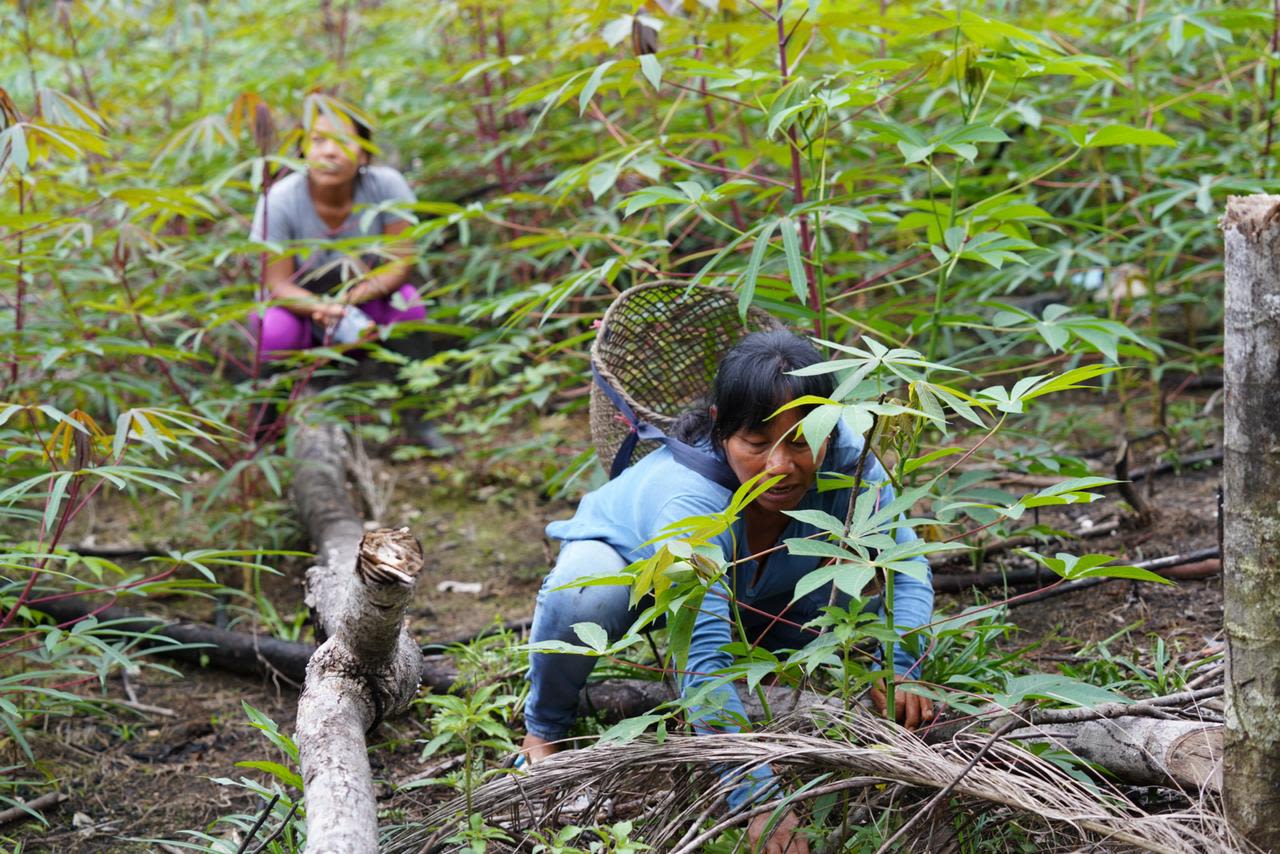
A Visionary Partnership
The REM Amazon Vision Programme is an initiative of the government of Colombia with financial support from the governments of Norway, Germany, and the United Kingdom.
It seeks to build a long-term development vision for the Colombian Amazon, promoting tropical forest protection strategies and the sustainable use of natural resources.
One of its main axes of development is the Environmental Governance with Indigenous Peoples Pillar, which focuses on strengthening the capacities of the indigenous peoples of the Amazon to conserve their territories.
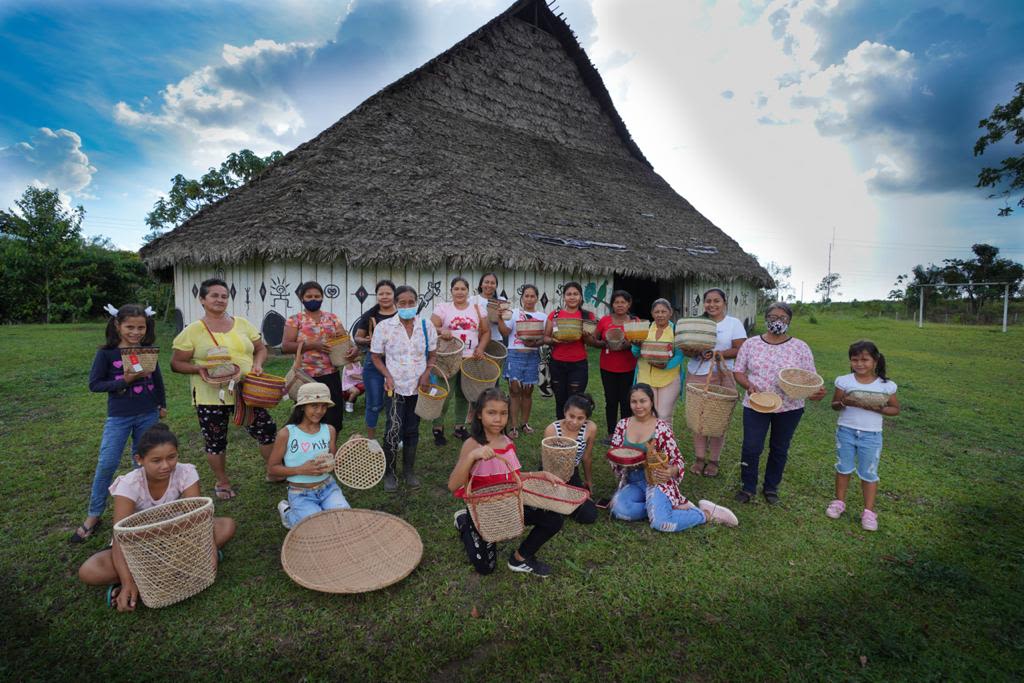
Strengthening of the craft activity in the women of the Canasto De La Abundancia Association, taking advantage of natural resources in a sustainable way, for the conservation of the forest and improvement of the good living of artisan families. Photo: © Visión Amazonía.
This is the result of a series of workshops conducted in 2018 by the Amazon Vision team with the Organisation of Indigenous Peoples of the Colombian Amazon (OPIAC).
Thanks to the indigenous women who participated in this process, women’s empowerment was not only included as a cross-cutting issue in the programme, but was also treated as a specific axis, securing 10 per cent of the financial resources assigned to the Environmental Governance with Indigenous Peoples Pillar.
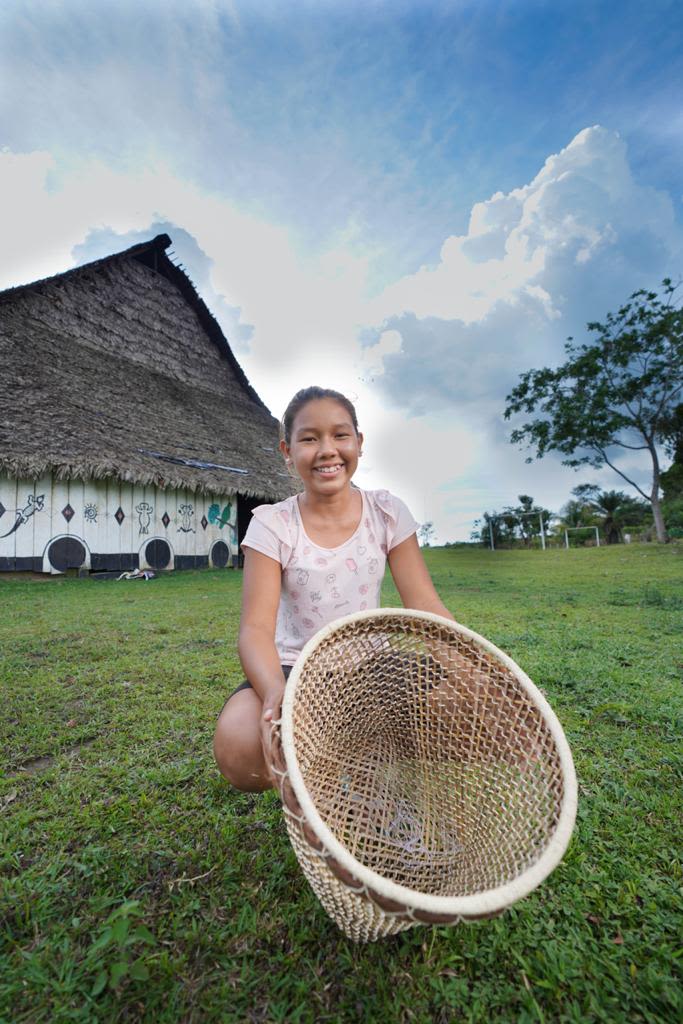
Training also includes improving the conditions of production, use and collection of raw material for the manufacture of handicrafts. Photo: © Visión Amazonía.
Given SGP’s experience of working with local communities on initiatives that strengthen environmental conservation while promoting sustainable livelihoods, the REM Amazon Vision Programme invited it to manage this component - and the Guardians of the Amazon alliance was born.
The alliance currently supports 69 projects implemented by community-based organisations to to implement projects aimed at building the capacity of Amazonian indigenous women. These projects are giving visibility to their traditional knowledge and practices, and encouraging them to become leaders in local self-governance systems.
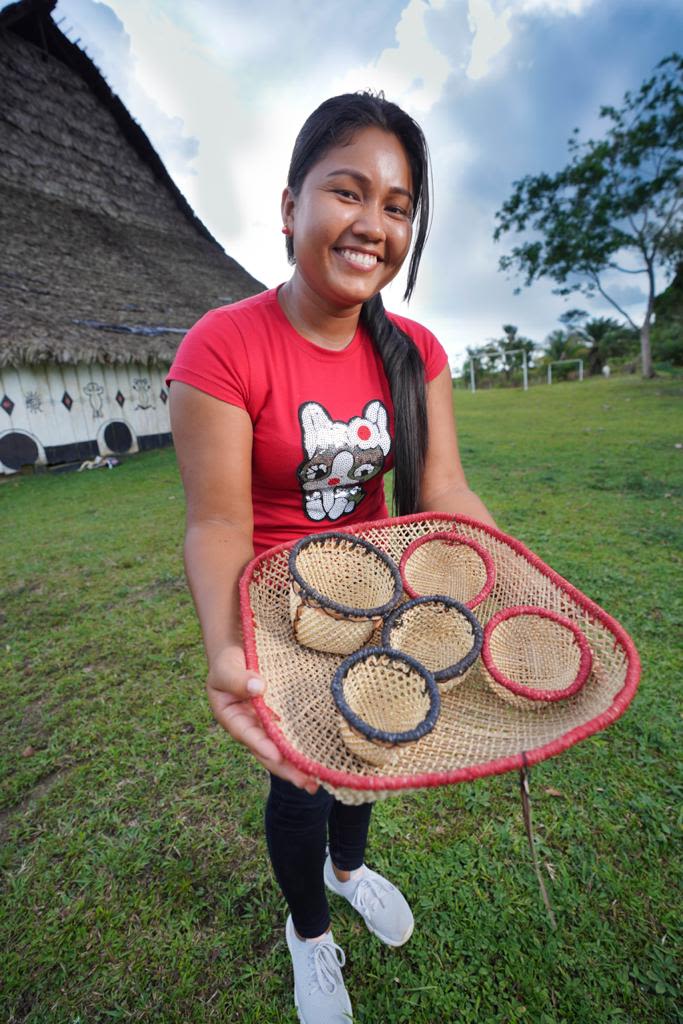
The training also encourages new designs and creation of new products. Photo: © Visión Amazonía.

Strengthening of the craft activity in the women of the Canasto De La Abundancia Association, taking advantage of natural resources in a sustainable way, for the conservation of the forest and improvement of the good living of artisan families. Photo: © Visión Amazonía.
Strengthening of the craft activity in the women of the Canasto De La Abundancia Association, taking advantage of natural resources in a sustainable way, for the conservation of the forest and improvement of the good living of artisan families. Photo: © Visión Amazonía.

Training also includes improving the conditions of production, use and collection of raw material for the manufacture of handicrafts. Photo: © Visión Amazonía.
Training also includes improving the conditions of production, use and collection of raw material for the manufacture of handicrafts. Photo: © Visión Amazonía.

The training also encourages new designs and creation of new products. Photo: © Visión Amazonía.
The training also encourages new designs and creation of new products. Photo: © Visión Amazonía.
As the loss of traditional knowledge was identified as one of the women’s primary concerns, most projects focus on revitalising traditional food systems, specifically through the establishment of nearly 400 chagras, which are traditional agricultural areas used by indigenous communities in the Amazon.
ASCAINCA does this by promoting the planting of medicinal plants, as well as the exchange of seeds to recover and preserve biodiversity.
Across the Guardians of the Amazon portfolio, indigenous women are responsible for managing 1,000 hectares of chagras to ensure food security for their communities, as well as for protecting and restoring 50 areas of biological and cultural importance.
Other projects target small enterprises run by women, supporting the sustainable use of raw materials and the production and sale of handicrafts. The Basket of Abundance organisation (El Canasto de la Abundancia in Spanish) is an example of this. Located around the town of Solano, in the department of Caquetá, it includes 18 indigenous women from the Murui Muina people.
One of them is Yurí Tatiana Benavidez, who works as a teacher, artisan, and chagrera – the name given to women who tend to chagras:
“We are using our natural resources sustainably, for example with the palm of Kumare. We cut the palm with the sickle to extract the fibre used in our fabrics. The same with the vine and the Guaruma [a plant used to make handicrafts], which are not uprooted, but also cut with the sickle. We have also worked on the reforestation of some of these species, since in the future we do not want them to be endangered.”
Ms Benavidez notes that the association was created to ensure traditional knowledge within her community was passed on to new generations and not lost, while also empowering indigenous women through income-generating activities.
“What I like the most in El Canasto de la Abundancia is helping to show other women that they can help their families. Because within all this beautiful process that we are doing, we are also helping men and families’ economic situation. One of the women said that women do not contribute money to their families, but I say that we contribute a lot through handicrafts to improve the quality of life of the children of each one of us.”
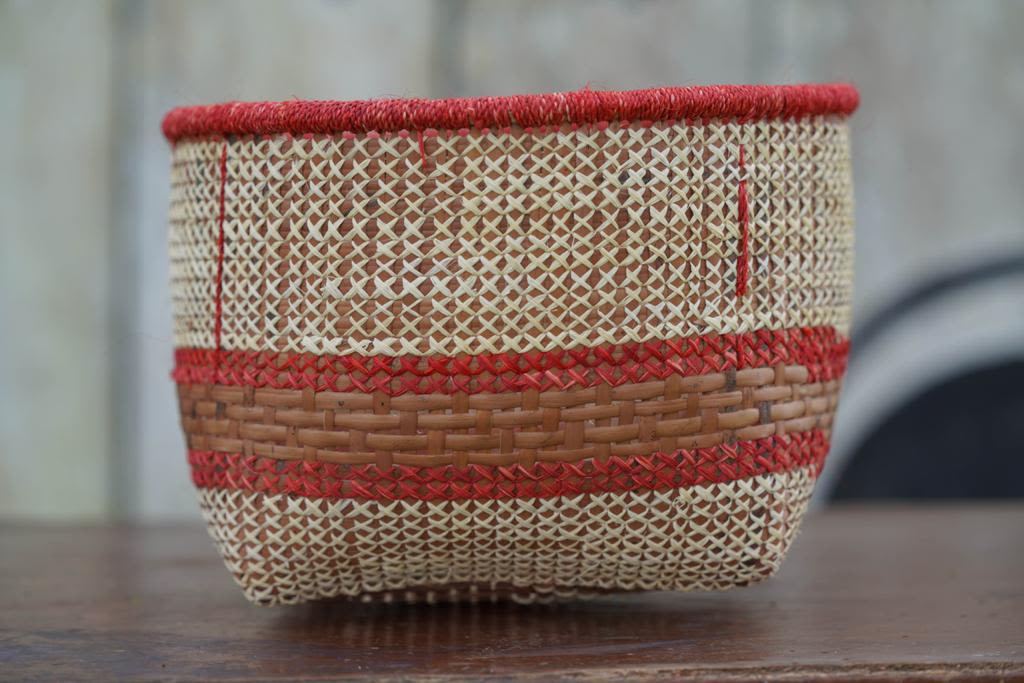
Caretakers and Conservationists
Ms Benavidez adds that indigenous women in her region have always participated in initiatives like the Guardians of the Amazon, but that they had never been directly involved in managing them before:
“This is very important because women are the caretakers of the Colombian Amazon, they are conservationists and have knowledge and wisdom. I believe that this project helps to strengthen our knowledge in all areas, and allows us to empower ourselves more as indigenous women and to demonstrate that each one of us is very valuable to our community.”
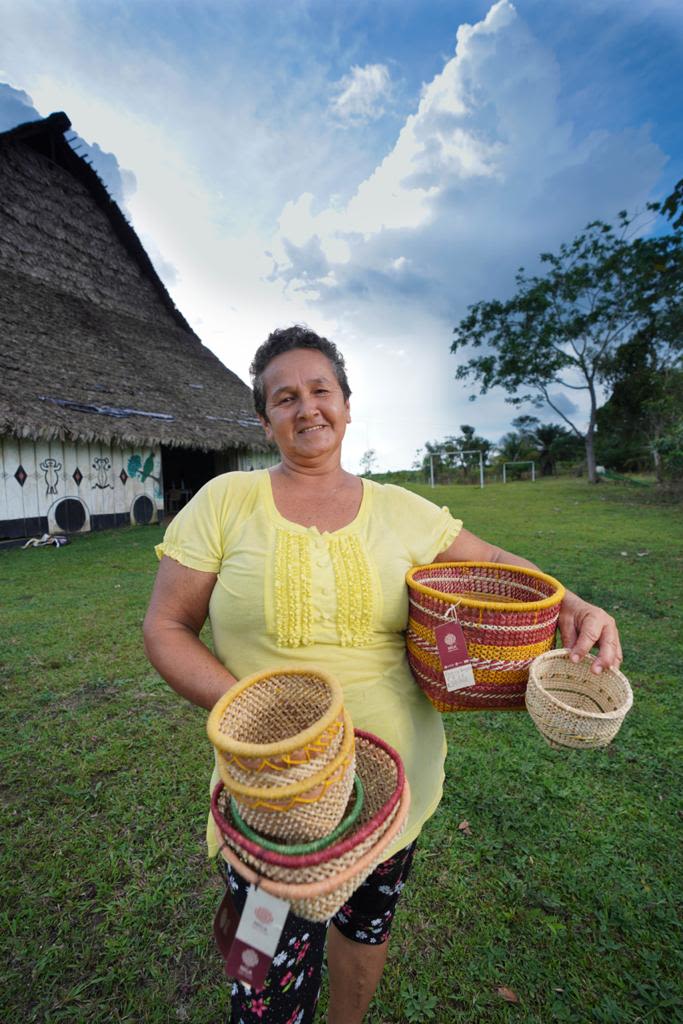
Photo: © Visión Amazonía.
The National Coordinator of SGP in Colombia, Ana Beatriz Barona, also highlights the fact that these projects are designed and led by indigenous women:
“They not only show the issues of greatest interest and concern to these women, but also propose how to address them. In addition, working with 69 community-based organizations and facilitating processes of reflection and dialogue between them is an invaluable opportunity to generate learning and build proposals for action for the conservation and governance of their territories, from their perspective”.

Photo: © Visión Amazonía.
Photo: © Visión Amazonía.
“Project development, resource management through collective decision-making processes, and the preparation of technical and financial reports present several challenges and an entire learning experience for indigenous women, since for many of them this is the first time that they pursue their goals with some autonomy. In many cases, this has involved taking positions of leadership and finding ways to articulate arguments with the authorities in their communities, who are mostly men, which is building their capacity to participate and influence the management of their territories.”
The work of the Guardians of the Amazon has only just started, but it already represents an important step towards strengthening and giving visibility to the role of indigenous women as crucial custodians of the forests in the Colombian Amazon.
Small Grants = Big Impacts
Since 2015, SGP has supported more than 360 projects in Colombia in the areas of biodiversity, capacity development, climate change and land degradation. 221 were supported by the GEF and 139 by SGP country partners.
For more details on SGP’s work in Colombia, visit the SGP Colombia website (in Spanish) and here (in English).
For information on SGP global portfolio, visit the global SGP website.


Story by: Natalia Gónima Escobar, Ana Paula Canestrelli, Andrea Egan, Ana Beatriz Barona and Angelica Shamerina
Photos: © Visión Amazonía and Gregoire Dubois
Header photo: © Visión Amazonía
Location: Amazon forest, Colombia
